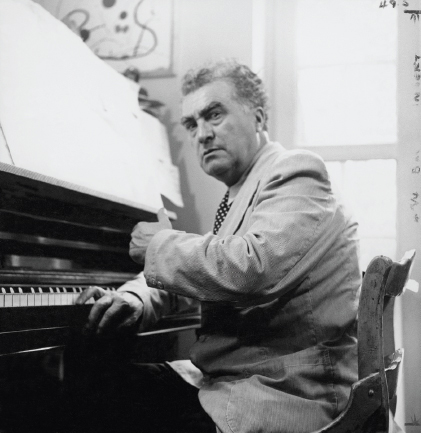Edgard Varèse (1883–1965)
All of the composers listed were born in the twentieth century, and most of them after World War I. Edgard Varèse, the first composer we take up, was a generation older — and a fascinating case of a visionary who bridged both avant-garde phases of musical modernism. Though he started his career in Paris and Berlin before World War I, most of his early scores were destroyed in a fire. One of them had caused a scandal at its 1911 premiere. He emigrated to America in 1915, and it was here that he truly found his voice (late in life, like Haydn).

Edgard Varèse, composer of “noise.”© Condé Nast Archive/Corbis.
The music Varèse wrote in the 1920s was some of the most radical anywhere at that time. He developed an approach to rhythm and sonority that surpassed anything the other early avant-garde composers had attempted. He thought not so much of music in a conventional sense as of “organized sound” and its “liberation” from scales and the like. Hyperprism is scored for seven wind instruments and as many percussion, and Ionisation is for percussion alone — thirteen players on forty-five instruments, including a police siren. The manipulation of what others considered “noise” into coherent musical patterns was a heady forecast of things to come after World War II.
Indeed, it was after World War II that this veteran of many a modernist battle came into his own. About 1930, Varèse had tried unsuccessfully to persuade the Bell Telephone Company to set up a research center for electrically produced music. Now the introduction of electronic composing equipment was a vindication of his vision. His Déserts (1950–54), for instruments and tape, was one of the most ambitious early essays in electronic music. And his Poème électronique — entirely electronic, with only tape and no live performers — is recognized as one of the masterpieces of the genre.
